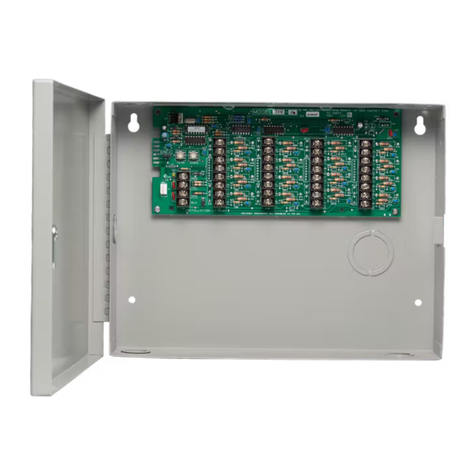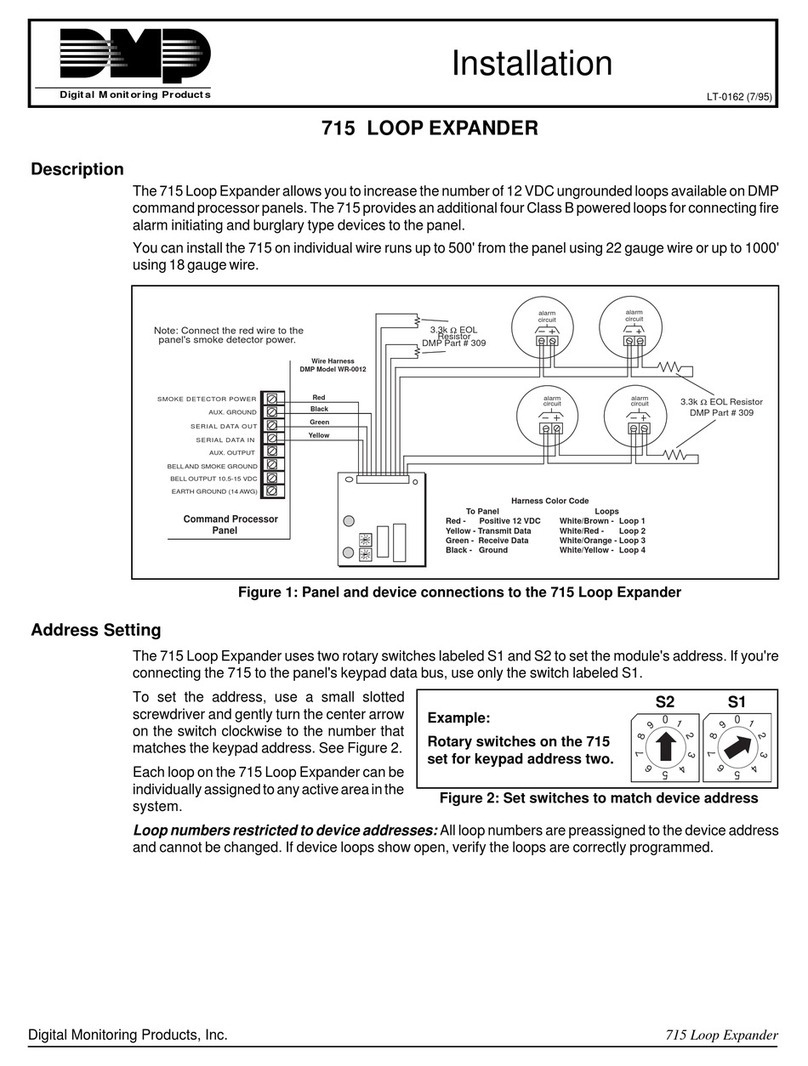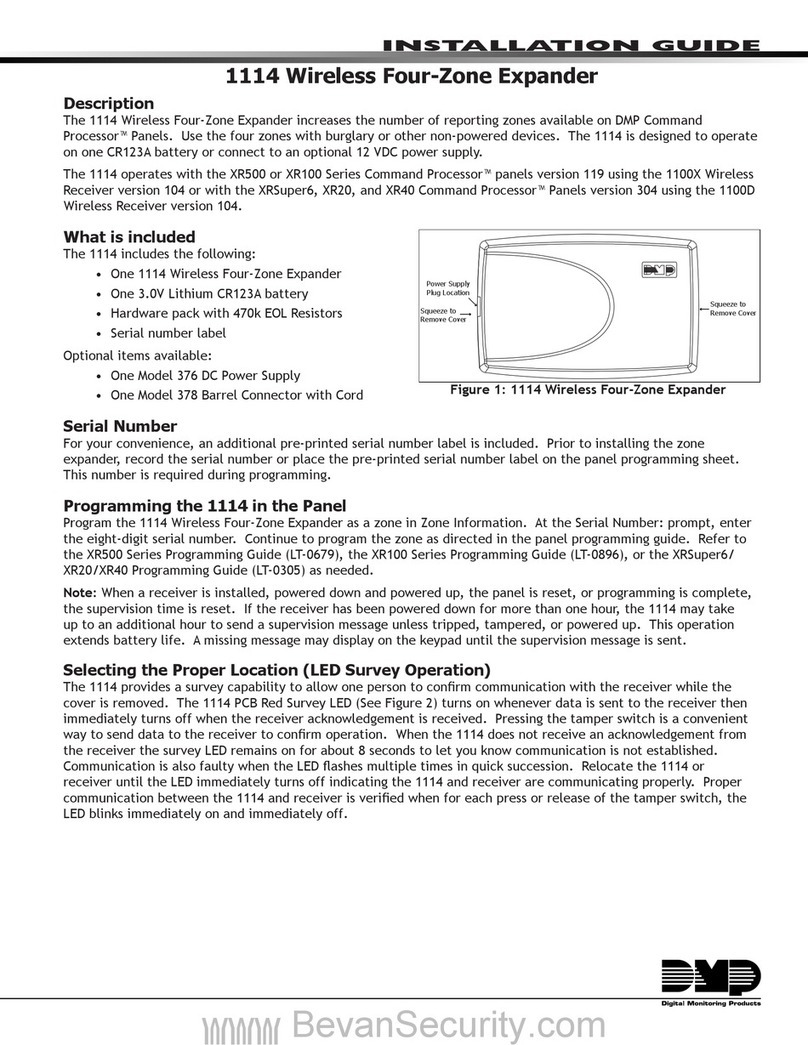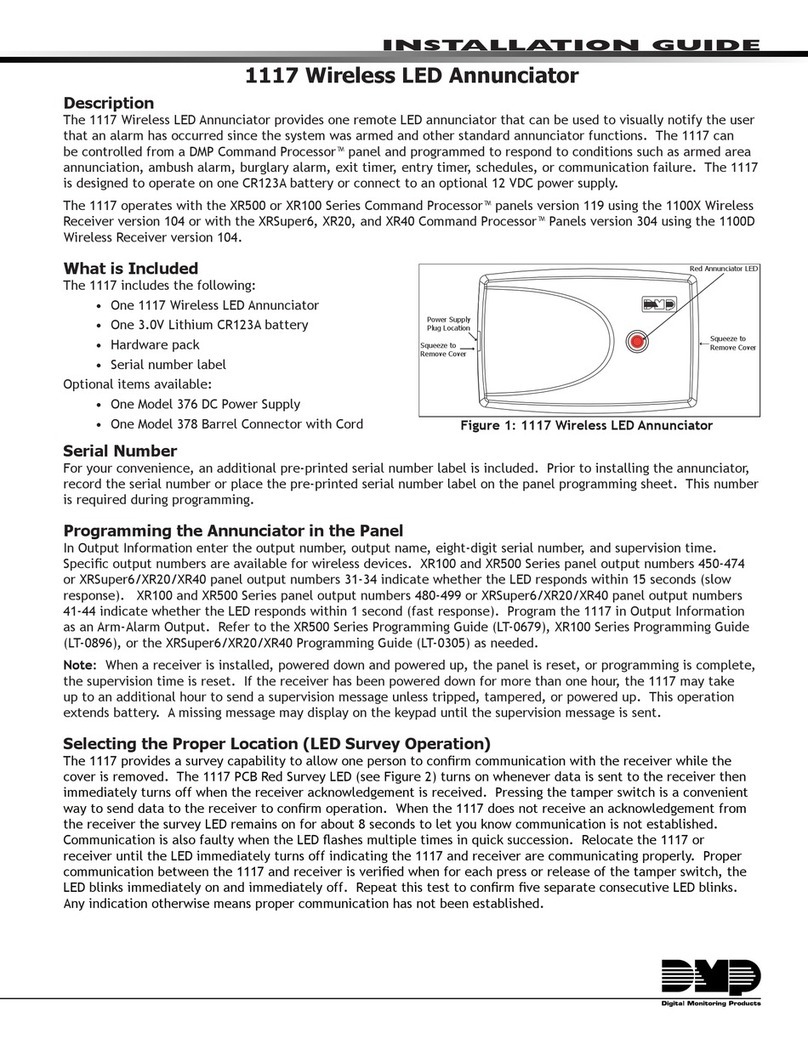
LT-0705 © 2014 Digital Monitoring Products, Inc.
14405
800-641-4282
www.dmp.com 2500 North Partnership Boulevard
Specications
Battery
LifeExpectancy 3years
Type 3.0VLithiumCR123A
SeeBatteryLifeExpectancyforfulldetails.
FrequencyRange 903-927MHz
Dimensions 4.65”Lx3.1”Wx1.4”H
Color White
HousingMaterial FlameretardantABS
Accessories
CR123 DMP3.0VLithiumBattery
376L DCPlug-inPowerSupply
505-12 12VDCPowerSupply
Compatibility
1100D Wireless Receiver using version 104
1100DHWirelessHighPowerReceiverusingversion105
1100DIWirelessIn-lineReceiverusingversion105
1100X Wireless Receiver using version 104
1100XHWirelessHighPowerReceiverusingversion105
XTLPanelwithintegratedwirelessreceiverusingversion104
XTLNPanelwithintegratedwirelessreceiver
XT30/XT50Seriespanelwithintegratedwirelessreceiver
using version 101
Patents
U.S.PatentNo.7,239,236
Listings and Approvals
FCCPart15RegistrationIDCCKPC0101
ICRegistrationID5251A-PC0101
FCC Information
ThisdevicecomplieswithPart15oftheFCCRules.Operationissubjecttothefollowingtwoconditions
(1)Thisdevicemaynotcauseharmfulinterference,and
(2)thisdevicemustacceptanyinterferencereceived,includinginterferencethatmaycauseundesiredoperation.
Theantennausedforthistransmittermustbeinstalledtoprovideaseparationdistanceofatleast20cm(7.874in.)
from all persons. It must not be located or operated in conjunction with any other antenna or transmitter.
Changesormodicationsmadebytheuserandnotexpresslyapprovedbythepartyresponsibleforcompliancecould
void the user’s authority to operate the equipment.
Note: This equipment has been tested and found to comply with the limits for a Class B digital device, pursuant to
part15oftheFCCRules.Theselimitsaredesignedtoprovidereasonableprotectionagainstharmfulinterference
in a residential installation. This equipment generates, uses and can radiate radio frequency energy and, if not
installed and used in accordance with the instructions, may cause harmful interference to radio communications.
However,thereisnoguaranteethatinterferencewillnotoccurinaparticularinstallation.Ifthisequipmentdoes
cause harmful interference to radio or television reception, which can be determined by turning the equipment off
and on, the user is encouraged to try to correct the interference by one or more of the following measures:
- Reorient or relocate the receiving antenna.
- Increase the separation between the equipment and receiver.
- Connect the equipment into an outlet on a circuit different from that to which the receiver is connected.
- Consultthedealeroranexperiencedradio/TVtechnicianforhelp.



























